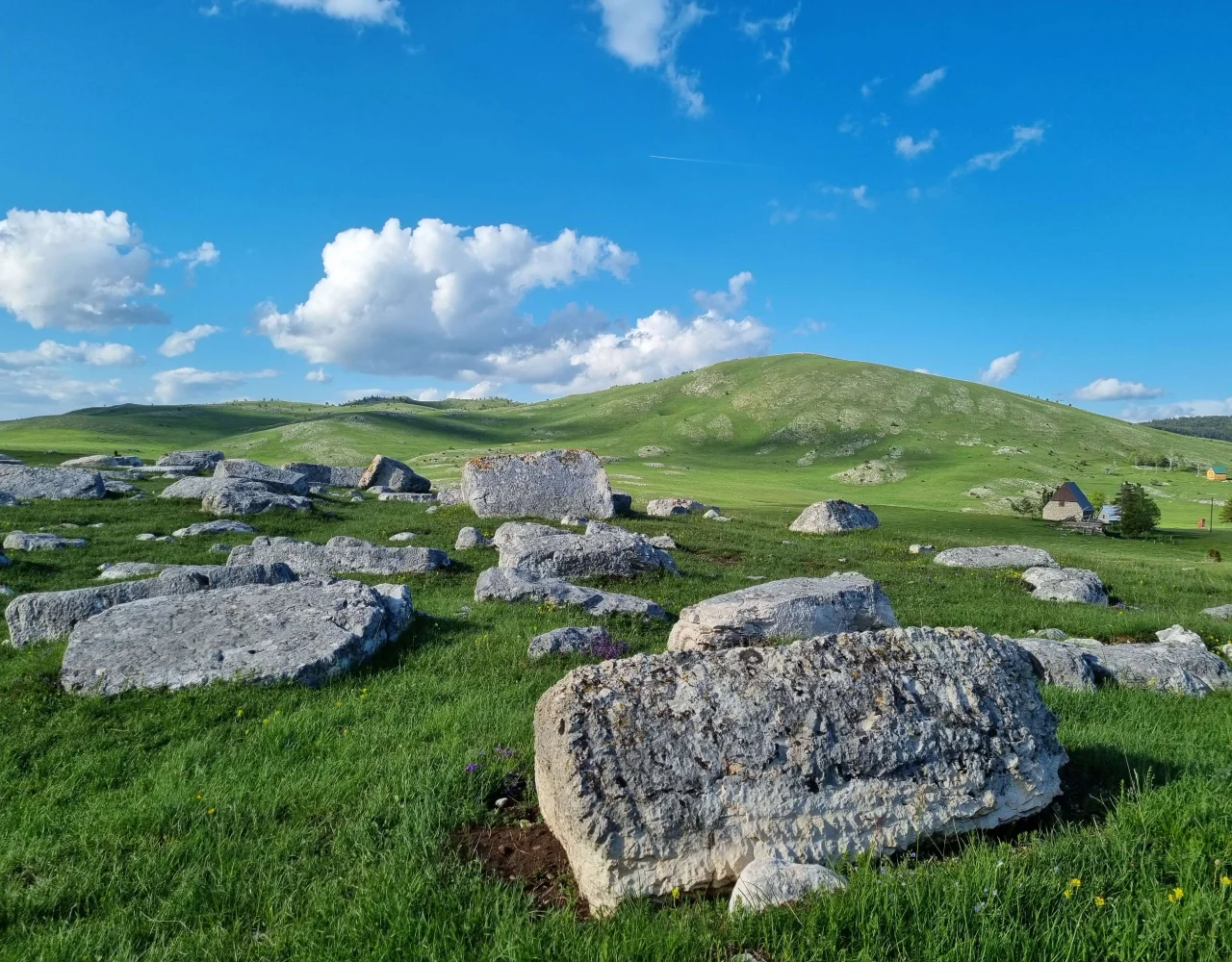Traces of human life in the Durmitor region date back to the Paleolithic era in pits and caves, temporary or permanent habitats of hunters and herders. The oldest testimonies about the ancient stay of man in the Tara canyon come from Gornja Dobrilovina. The material evidence found in Salintrača and Đurova Pećina comes from the Paleolithic and Metal Age. Downstream from Đurđević Tara in Leveri, the preserved remains of the castle point to the first settlement founded during the Bronze Age. In the locality of Jularica and above Luka on the Žugića river, in Tepci, as well as in Vodeni Dol, there is a large number of unexplored Illyrian tumuli.
In Lever Tara, next to the caravan road that in ancient times connected Nikšić (municipality of Adverba) and municipium S in Komin near Pljevlja, at the site of Preslica in a naturally cut rock in the field of a pagan altar there is an inscription dedicated to the oriental deity Mithras, whose cult in II and in the 3rd century AD respected throughout the Roman Empire. There are numerous medieval necropolises in the Park area and in the surrounding area, which the locals call "Greek" or "Roman" cemeteries, with an abundance of tombstones from the 14th and 15th centuries. The most interesting stećci are with decorative plastic of human and animal figures and with hunting scenes, in Novakovići, Bara Žugića, Baćevnik, Tepcima, Begova Ravna, Boričje.
The rich and layered cultural-historical heritage of Durmitor can be traced from the oldest prehistoric eras to the present day, where the influences of various cultures have continuously changed. The preserved remains of the prehistoric era are characterized by several tumuli (burial mounds), which testify to the presence of the Illyrians in this area. From the time of Roman domination, clear evidence remains in the wider area of the Park - cypresses, stone bridges, caravan routes.
The medieval period includes necropolises with stylized stećci, ruins of Turkish bridges and watchtowers along the old Montenegrin-Turkish border, the ruins of the ancient Pirlitor fortress above Lever and three monasteries in the Tara valley, in Dobrilovina, Doblija and Đurđevića Tara, built from the 15th to the 17th centuries. The Durmitor area has a diverse traditional architectural heritage with individual examples of rural log cabin towers, and on the katuns there are savardaks, jatars, huts and wooden mills and rolling mills on the river courses.
The special value of the cultural tradition is represented by folk spiritual creativity expressed through legends and traditions, anecdotes and proverbs, epic poetry and partisan songs, inspired by nature, personalities and events of the Durmitor region.

